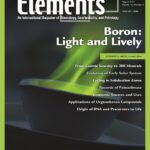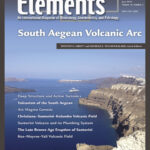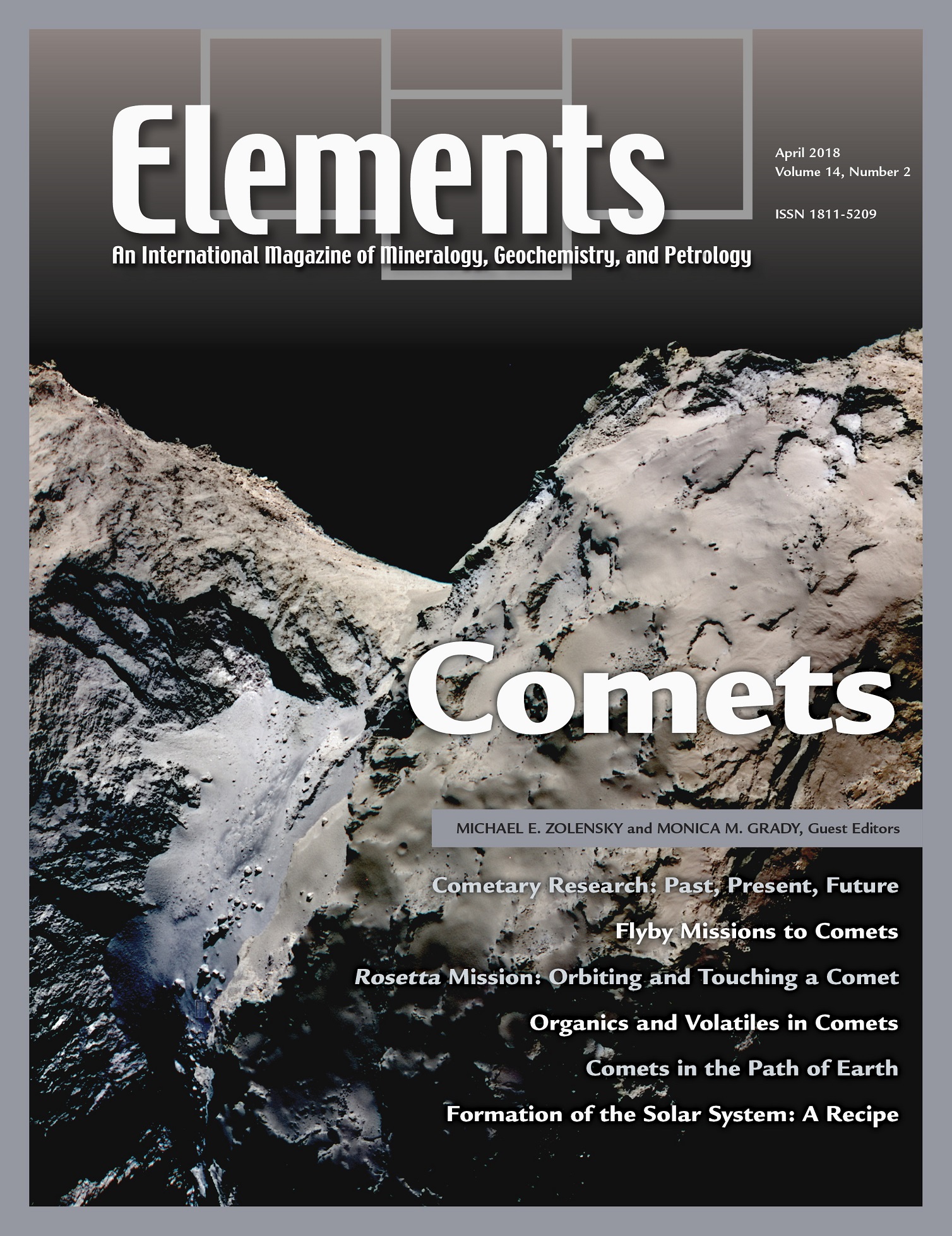
Boron: Light And Lively, August 2017, Vol. 13, No. 4
June 28, 2024
South Aegean Volcanic Arc, June 2019, Vol. 15, No. 3
June 28, 2024Comets, April 2018, Vol. 14, No. 2
$20.00
It is now possible, for the first time, to synthesize what has been learned regarding the mineralogy, geochemistry, and geology of comets from the Giotto, Vega, Stardust, Stardust NEXT, Deep Impact, and Rosetta missions to comets Halley, Wild 2, Borrelly, Tempel 1, and Churyumov– Gerasimenko. Articles in this issue describe the nature of cometary inorganic phases, volatiles, notable water, and organics.
Comets
April 2018, Vol. 14, No. 2
It is now possible, for the first time, to synthesize what has been learned regarding the mineralogy, geochemistry, and geology of comets from the Giotto, Vega, Stardust, Stardust NEXT, Deep Impact, and Rosetta missions to comets Halley, Wild 2, Borrelly, Tempel 1, and Churyumov– Gerasimenko. Articles in this issue describe the nature of cometary inorganic phases, volatiles, notable water, and organics. As shown in this issue, the relationships between the organics and the volatile inventories of terrestrial planets are critical. Processes that force comets to interact with other Solar System bodies are also discussed. For example, dust shed by comets enters the atmospheres of planets every day, observed as meteor showers that can be traced back to specific parent comets. One implication of this fact is that the enigmatic methane observed in the Martian atmosphere may arise from meteor showers of cometary material.
Why You’ll Love Elements Magazine:
- Expert Contributors: Articles written by renowned researchers in the field of geoscience.
- Engaging Content: Join a community of readers who are passionate about Elements.
- Exceptional Quality: Each issue is printed on high-quality paper with stunning visuals and detailed illustrations that bring complex scientific concepts to life.
Order your copy of the April 2018 issue of Elements magazine today and delve into comets.
Related products
-
Glasses And Melts: Linking Geochemistry And Materials Science, October 2006, Vol. 2, No. 5
$20.00Geological interest in studying melts stems from early recognition that melts play a fundamental role in determining the physical and chemical behaviour of magmas and magmatic processes. However, due to the inherent difficulties associated with working at high temperatures, much of the geological research over the last 30 years has used quenched melts or glasses as proxies for melts themselves.
-
Supervolcanoes, February 2008, Vol. 4, No. 1
$20.00Explosive super-eruptions from large volume, shallow magma systems lead to enormous and devastating pyroclastic flows, the formation of gigantic collapse calderas, and deposition of volcanic ash over continent-sized areas. Recognition that future eruptions from these “supervolcanoes” will undoubtedly have severe impacts on society—and perhaps on life itself—has led to recent public and media interest.
-
Zircon – Tiny But Timely, February 2007, Vol. 3, No. 1
$20.00Where would Earth science be without zircon? As Earth’s timekeeper, zircon has proven to be a remarkable and versatile mineral, providing insights into deep time and ancient Earth processes. However, there is still much to learn about Earth’s history from zircon and its behaviour.




